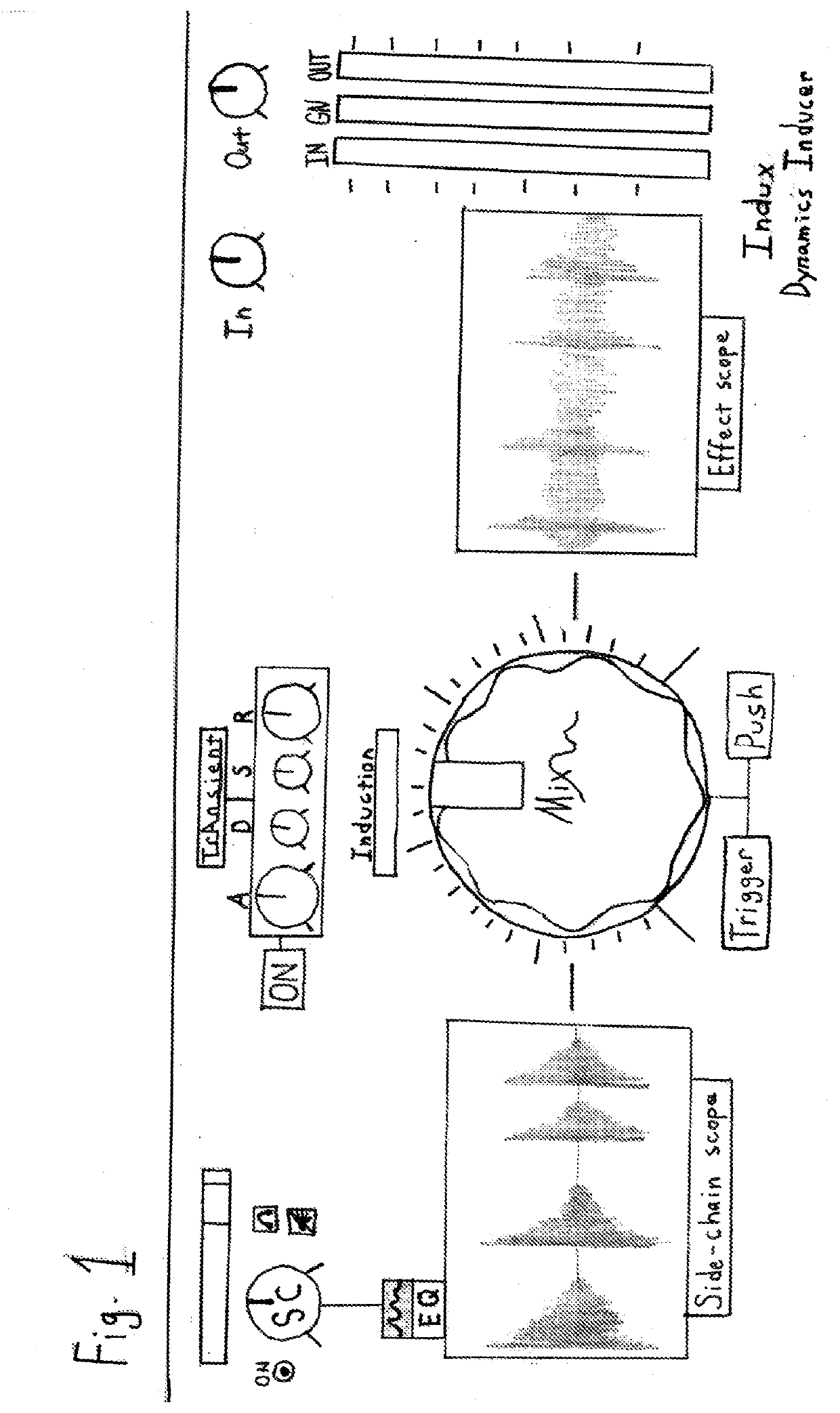Indux Dynamics Inducer
a technology of dynamics inducer and inducer, which is applied in the field of audio processing, can solve the problems that the industry lacks the ability to apply the change in dynamics of one signal to another signal, and achieves the effects of dull dynamics, increasing amplitude, and reducing amplitud
- Summary
- Abstract
- Description
- Claims
- Application Information
AI Technical Summary
Benefits of technology
Problems solved by technology
Method used
Image
Examples
Embodiment Construction
[0012]In the following description of the present invention, reference is made to the accompanying drawing, in which various embodiments by which the invention may be practiced are illustrated. It is to be understood that other embodiments may be used, and structural and functional modifications may be made without departing from the scope and principle of this present invention.
[0013]This present invention provides an entirely new category and method of audio dynamics processing that is completely different from the current industry dynamics processing technologies of compression, expansion, limiting, gating, transient adjusting, leveling, etc. This invention applies the variation in gain (dynamics), i.e. the ups and downs of amplitude, of a source signal to another signal, thereby “inducing” the dynamics of the affected signal, rendering a unique, novel, and highly useful audio effect. The level of “induction,” that is, how much of the dynamics of audio signal A (the side-chain si...
PUM
 Login to View More
Login to View More Abstract
Description
Claims
Application Information
 Login to View More
Login to View More - R&D
- Intellectual Property
- Life Sciences
- Materials
- Tech Scout
- Unparalleled Data Quality
- Higher Quality Content
- 60% Fewer Hallucinations
Browse by: Latest US Patents, China's latest patents, Technical Efficacy Thesaurus, Application Domain, Technology Topic, Popular Technical Reports.
© 2025 PatSnap. All rights reserved.Legal|Privacy policy|Modern Slavery Act Transparency Statement|Sitemap|About US| Contact US: help@patsnap.com

